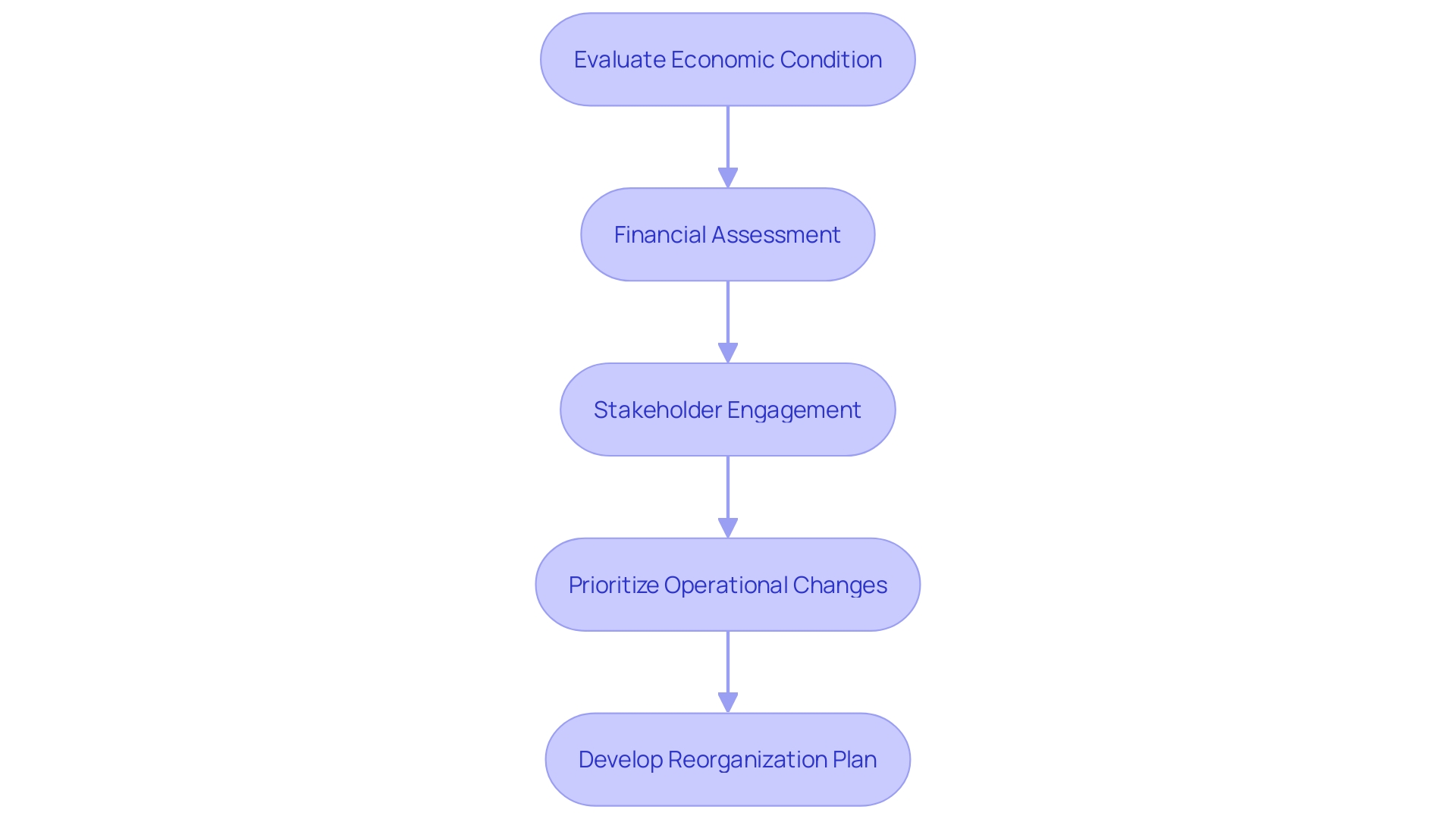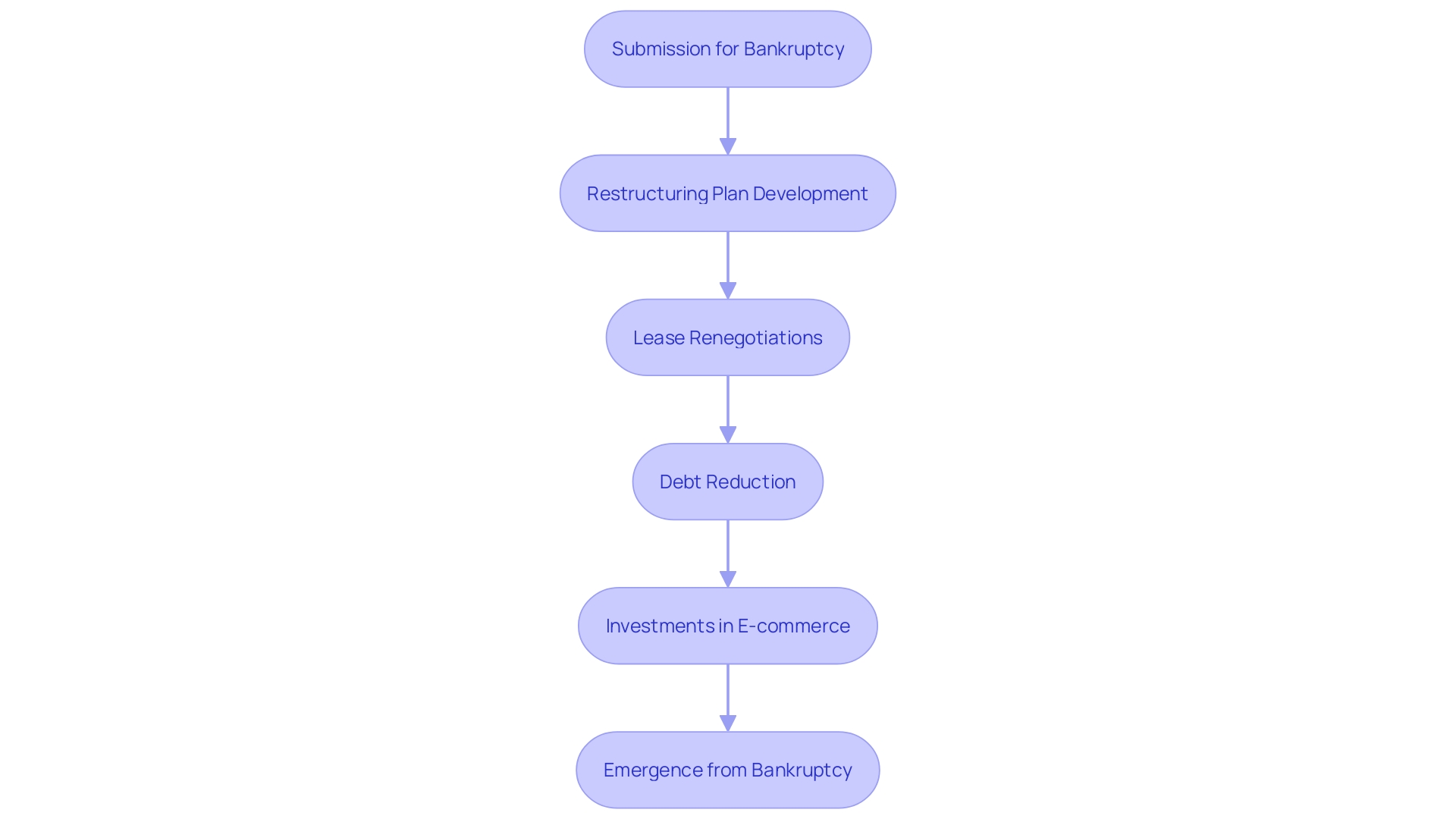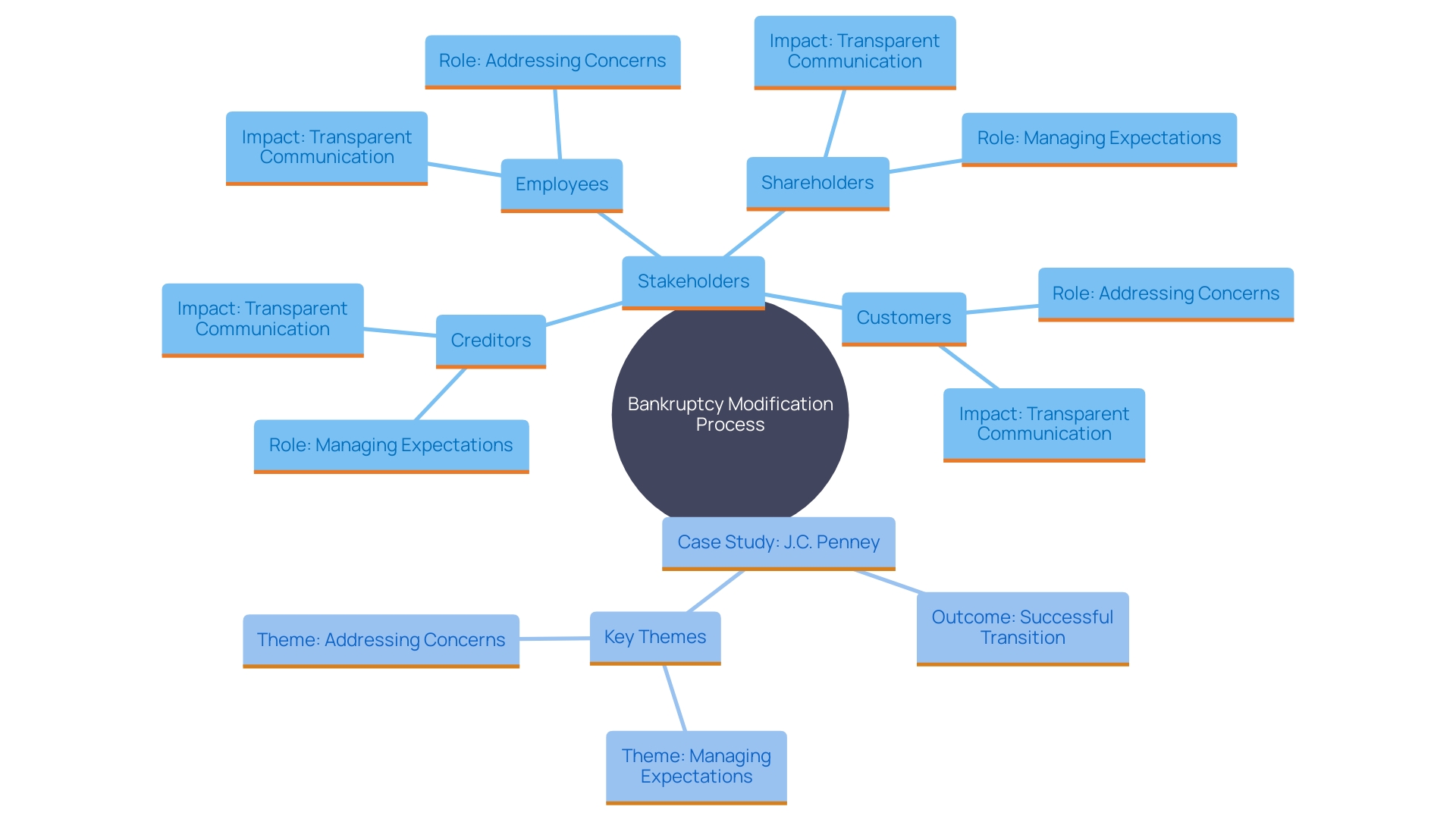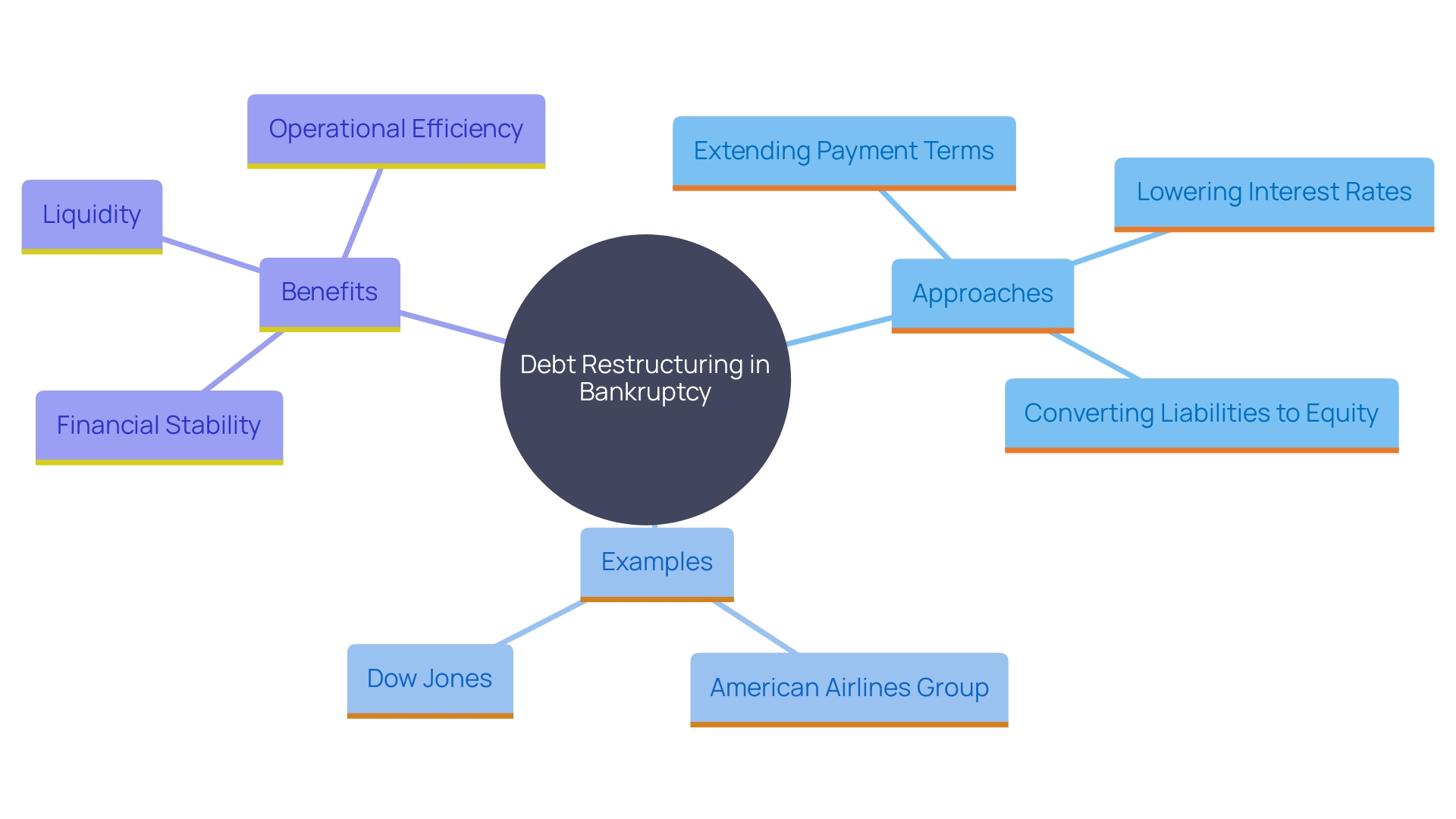Introduction
Navigating the complex terrain of bankruptcy restructuring requires precision, strategic foresight, and robust stakeholder engagement. A meticulous assessment of the company's financial health lays the foundation for a successful turnaround, involving comprehensive analyses of financial statements, debts, and cash flow dynamics. Early engagement with stakeholders is crucial to garner support and cooperation, setting the stage for the development of a clear and actionable restructuring plan.
This plan should prioritize cost reduction, revenue enhancement, and asset optimization to drive impactful results.
The case of Neiman Marcus underscores the effectiveness of a well-executed restructuring strategy, as the luxury retailer successfully navigated its Chapter 11 bankruptcy by addressing key financial challenges and investing in digital transformation. Stakeholders, including creditors, employees, shareholders, and customers, play a pivotal role in this process. Transparent communication and early involvement can mitigate resistance and foster a collaborative environment.
Debt restructuring strategies, such as extending payment terms or converting debt to equity, are essential for restoring financial stability and promoting growth. Examples from industry leaders like American Airlines Group and Dow Jones highlight the importance of a strategic approach to financial restructuring, ensuring long-term viability and success. This article delves into these key aspects, providing practical insights and solutions for effective bankruptcy restructuring.
Key Steps in Bankruptcy Restructuring
Successful bankruptcy reorganization begins with a careful evaluation of the organization's economic condition. This involves a thorough examination of monetary reports, a detailed inventory of outstanding obligations, and a comprehensive understanding of cash flow dynamics. Engaging stakeholders early is essential to secure their support and cooperation throughout the process. Once the evaluation is complete, the company should create a clear reorganization plan that defines the desired outcomes, timelines, and necessary operational changes. This plan must prioritize critical areas such as cost reduction, revenue enhancement, and asset optimization to ensure a successful turnaround.

Case Study: Neiman Marcus Restructuring
In May 2020, Neiman Marcus submitted for Chapter 11 bankruptcy, prompted by the financial pressure of the COVID-19 pandemic and prior financial obstacles. The luxury retailer embarked on a comprehensive restructuring plan aimed at stabilizing its finances and adapting to new market realities. Key elements of this strategy included renegotiating lease agreements and reducing overall debt by approximately $1 billion. Moreover, the organization made substantial investments in improving its e-commerce capabilities, acknowledging the change in consumer behavior towards online shopping.
This multi-faceted approach proved successful; by September 2020, Neiman Marcus emerged from bankruptcy, better positioned to compete in the evolving retail landscape. The company's renewed focus on digital transformation and operational efficiency highlights the importance of adaptability and strategic planning in navigating financial crises. Consequently, Neiman Marcus is now ready for future expansion, showcasing the effectiveness of well-executed bankruptcy reorganization and crisis management solutions.

The Role of Stakeholders in Restructuring
Stakeholders are essential to the bankruptcy modification process, encompassing creditors, employees, shareholders, and customers. Maintaining transparent communication with these groups is crucial for managing expectations and fostering collaboration. For instance, during the 2020 reorganization of J.C. Penney, the management team consistently informed creditors about the advancement of the reorganization plan, addressing their concerns directly. This approach not only mitigated resistance but also paved the way for more favorable outcomes for all parties involved. As Joan Beets observed, reorganizing fundamentally changes an organization's operational fabric, introducing uncertainty and possible stress among the workforce. 'Recognizing these emotions and engaging stakeholders early can result in a more seamless transition and successful reorganization.'.

Debt Restructuring Strategies
Debt restructuring is an essential aspect of the bankruptcy process, aimed at reorganizing a company's financial obligations to restore stability and growth. Different approaches can be utilized, such as extending payment terms, lowering interest rates, or converting liabilities to equity. For instance, American Airlines Group restructured $29 billion in debt through a mix of renegotiated loans and new equity financing post-bankruptcy. This strategic move not only provided immediate liquidity but also paved the way for a sustainable capital structure.
Efficient economic restructuring involves a thorough analysis of statements, identifying root causes of monetary distress, and setting specific goals. Companies often alter their debt-equity mix or renegotiate loan terms with creditors to enhance economic stability. This approach is crucial for overcoming economic distress, improving liquidity, and enhancing operational efficiency. During mergers and acquisitions, monetary reorganization aids in optimizing the capital framework, lowering debt load, and releasing resources for growth opportunities.
A notable example is the 2017 reorganization of Dow Jones, the parent company of The Wall Street Journal, which aimed at modernizing its operations for a digital-focused future. Such comprehensive restructuring initiatives demonstrate the importance of a well-planned financial strategy in ensuring long-term viability and success.

Conclusion
Navigating the complexities of bankruptcy restructuring demands a strategic and proactive approach. The initial step involves a thorough assessment of the company's financial health, which serves as the foundation for developing a robust restructuring plan. Prioritizing cost reduction, revenue enhancement, and asset optimization is crucial for achieving a successful turnaround.
Engaging stakeholders early in the process not only fosters support but also enhances collaboration among all parties involved, ultimately contributing to a more effective restructuring outcome.
The case study of Neiman Marcus exemplifies the power of a well-executed restructuring strategy. By addressing significant financial challenges and investing in digital transformation, the company emerged from bankruptcy in a stronger position, ready to adapt to evolving market conditions. This highlights the importance of flexibility and strategic foresight in overcoming financial adversities and positioning the company for future growth.
Furthermore, implementing effective debt restructuring strategies is vital for restoring financial stability. Options such as extending payment terms or converting debt to equity can provide the necessary liquidity and pave the way for sustainable growth. The experiences of industry leaders, such as American Airlines and Dow Jones, underscore the critical role that comprehensive financial strategies play in ensuring long-term viability.
In conclusion, a successful bankruptcy restructuring process hinges on meticulous planning, stakeholder engagement, and innovative debt management strategies. By focusing on these key areas, organizations can navigate financial challenges effectively and emerge stronger, ready to seize new opportunities for growth and success.




